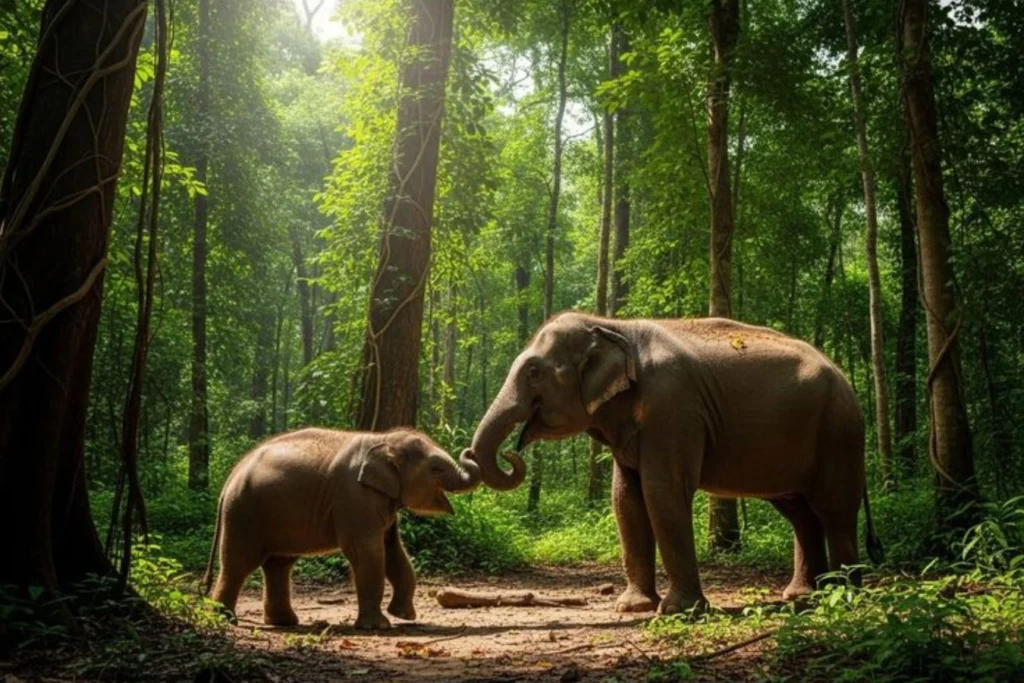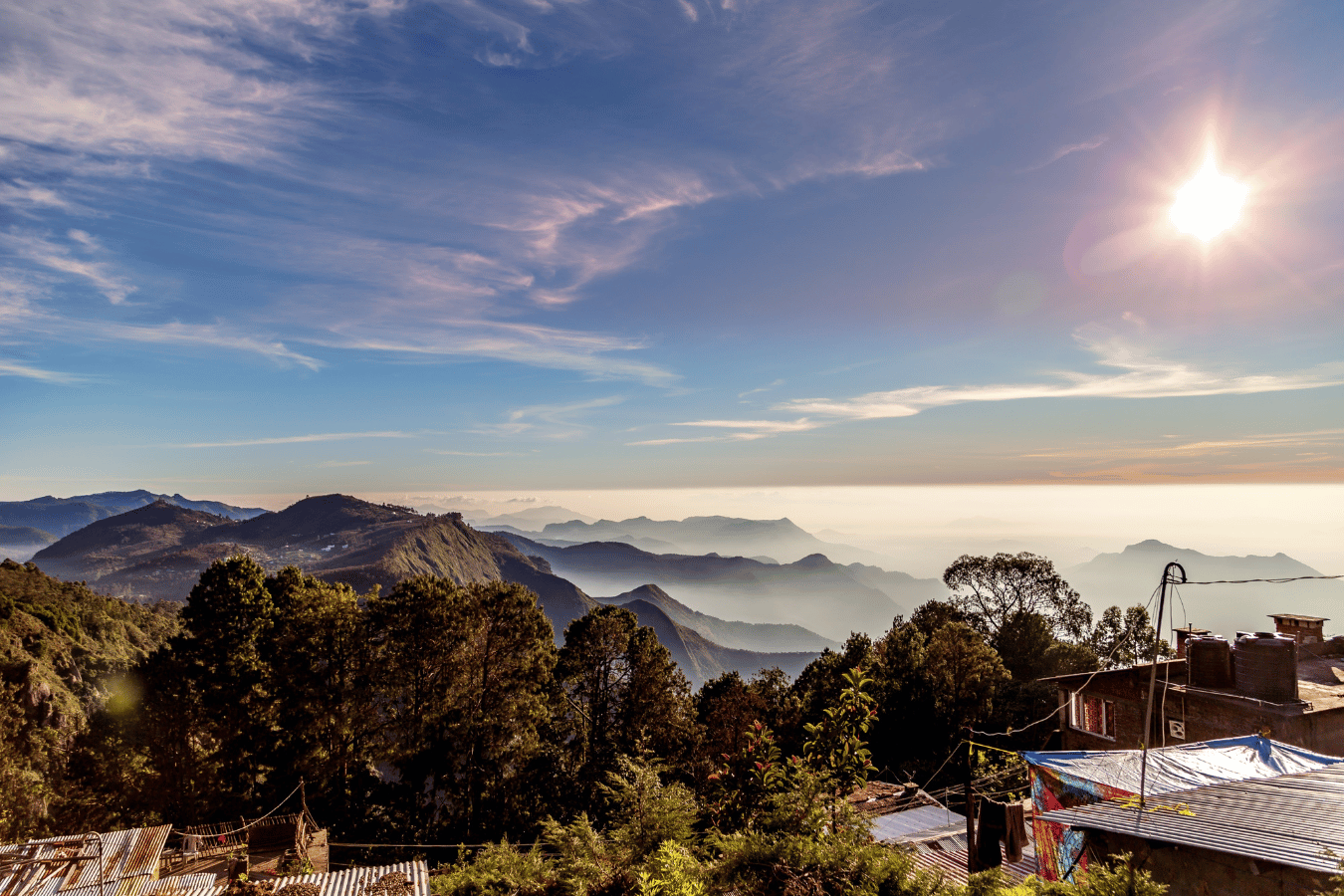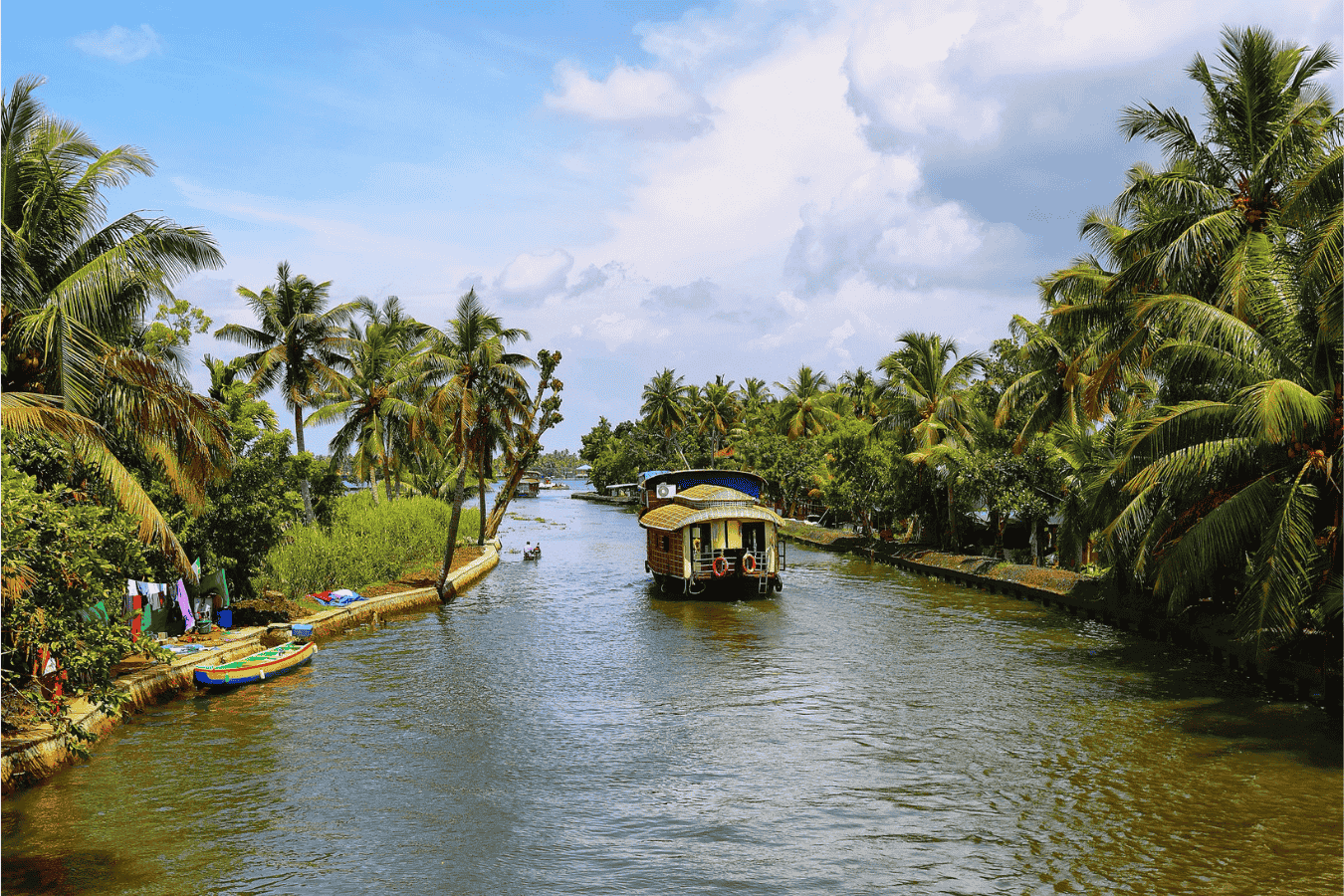The Wayanad Wildlife Sanctuary is divided into two main zones, Muthanga and Tholpetty, each offering a distinct experience for nature lovers. Muthanga, located in the southern part of Wayanad, is the larger section and shares its borders with Karnataka’s Nagarhole and Bandipur National Parks, making it a prime spot for wildlife sightings. Tholpetty, situated in the northern region near Thirunelli, is ideal for those seeking a more peaceful and less crowded encounter with nature.
Tucked away in the misty highlands of Kerala, the Wayanad Wildlife Sanctuary is one of South India’s most enchanting natural treasures. Spread across 344 square kilometers, this lush haven forms an integral part of the Nilgiri Biosphere Reserve, linking the protected forests of Nagarhole and Bandipur in Karnataka and Mudumalai in Tamil Nadu. Known for its rich biodiversity, scenic beauty, and opportunities for wildlife sightings, Wayanad offers two major eco-tourism zones, Muthanga and Tholpetty, each with its own unique charm.
Muthanga Wildlife Sanctuary – The Eastern Gateway of Wayanad Wildlife Sanctuary

Location of Muthanga Wildlife Sanctuary
Located about 16 km from Sulthan Bathery, Muthanga is the more popular and easily accessible zone of the Wayanad Wildlife Sanctuary. It lies close to the Karnataka border, making it a perfect stop for travelers moving between Wayanad, Bandipur, and Mysore.
Safari:
The Jeep safari in Muthanga is the highlight of any visit. Managed by the Kerala Forest Department, the safari takes you deep into the forest through narrow dirt tracks surrounded by towering teak and eucalyptus trees.
Time to visit Muthanga Wildlife Sanctuary
Morning slot: 7:00 AM – 10:00 AM.
Evening slot: 3:00 PM – 5:00 PM
Entry (walk-in) is generally possible from around 7:00 AM to 5:00 PM.
Entry Charges
- Indian adult: ~ ₹110 per person.
- Indian child/student: ~ ₹40 per person.
- Foreign visitor: ~ ₹300 per person.
- Still camera: ~ ₹38.
- Video camera: ~ ₹225
Tholpetty Wildlife Sanctuary – The Northern Gateway of Wayanad Wildlife Sanctuary

Location of Tholpetty Wildlife Sanctuary
Tholpetty, located near Mananthavady, lies about 60 km from Kalpetta and shares its northern boundary with Nagarhole National Park in Karnataka. Compared to Muthanga, Tholpetty is quieter, less crowded, and offers a more pristine wilderness experience.
Safari Experience
The Tholpetty Jeep Safari is similar to Muthanga’s but often feels more adventurous due to the denser forest and open meadows.
Time to Visit Tholpetty Wildlife Sanctuary
Morning slot: 7:00 AM to 10:00 AM.
Evening slot: 3:00 PM to 5:00 PM.
Entry Charges
- Indian adult: approximately ₹110
- Indian child/student: around ₹40 (for children 5-12 years)
- Foreigner: approximately ₹300 per person.
- Jeep safari (for the vehicle): around ₹675–₹720 for one jeep (for 7 persons)
Best Time to Visit Wayanad Wildlife Sanctuary
The ideal time to visit Wayanad Wildlife Sanctuary is between October and May, when the weather is pleasant and the animals are more active. The monsoon months (June to September) bring heavy rainfall, making safaris less frequent but offering a lush green landscape for photographers and nature lovers.
Tips for Visiting Wayanad Wildlife Sanctuary
- Book safaris early through the official Kerala Forest Department website or at the entrance gate.
- Wear earthy colors like brown or green to blend into the surroundings.
- Avoid loud noises or flash photography — it disturbs wildlife.
- Carry binoculars, a camera, and drinking water.
- Stay in eco-friendly resorts or homestays near Sulthan Bathery or Mananthavady to support local communities.
- Never feed animals or litter inside the sanctuary.
Conclusion
The Wayanad Wildlife Sanctuary, with its twin jewels Muthanga and Tholpetty, is not just a destination — it’s an experience that awakens your senses. From the thrill of spotting elephants in the wild to the serenity of mist-draped forests, every moment spent here connects you with the rhythm of nature. Among the many things to do in Wayanad, exploring these sanctuaries tops the list for wildlife lovers and adventure seekers alike.
So whether you’re planning a weekend getaway or an extended eco-adventure through the Western Ghats, make sure Wayanad’s wilderness finds a place on your itinerary. As one of the best tourist destinations in Kerala, it promises experiences that stay with you long after you leave. In the heart of these ancient forests, you’ll rediscover what it truly means to be wild and free.
For those looking to experience the hidden charm of the South in complete comfort, discover our Luxury India Tour Packages that offer a perfect mix of luxury and authentic Indian experiences.
Frequently Asked Questions
1. Is Wayanad Wildlife Sanctuary worth visiting?
Yes, Wayanad Wildlife Sanctuary is definitely worth visiting for its rich biodiversity, scenic forests, and thrilling wildlife safaris. It offers a perfect blend of adventure and tranquility, making it a must-see among Kerala’s natural attractions.
2.Which animal is Wayanad Wildlife Sanctuary famous for?
Wayanad Wildlife Sanctuary is most famous for its Asian elephants, which roam freely in herds across Muthanga and Tholpetty. It’s also home to tigers, leopards, and a variety of deer, making it a hotspot for wildlife enthusiasts.
3.What is unique about Wayanad’s wildlife?
What makes Wayanad’s wildlife unique is its incredible biodiversity within the Western Ghats, a UNESCO World Heritage site. The sanctuary hosts elephants, tigers, leopards, gaurs, and rare bird species, along with a mix of tropical forests, bamboo groves, and grasslands, offering a rare chance to see both large mammals and endemic flora in one place.
4.What is the famous of Wayanad?
Wayanad is famous for its lush green landscapes, wildlife sanctuaries, spice plantations, waterfalls, and historical sites. It’s particularly renowned for the Wayanad Wildlife Sanctuary, Edakkal Caves, chembra peak, and its serene hill stations that offer a perfect blend of nature, adventure, and culture.
5.Why do people wear scarves on safari?
People wear scarves on safari primarily to protect themselves from dust, sun, and insects. Scarves can also help blend into the natural surroundings, reducing the chance of disturbing wildlife, and provide warmth during early morning or evening safaris when temperatures can be cooler.





